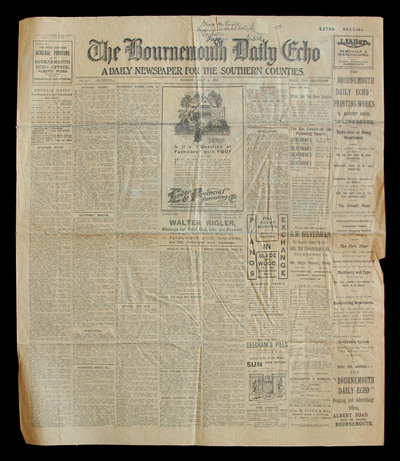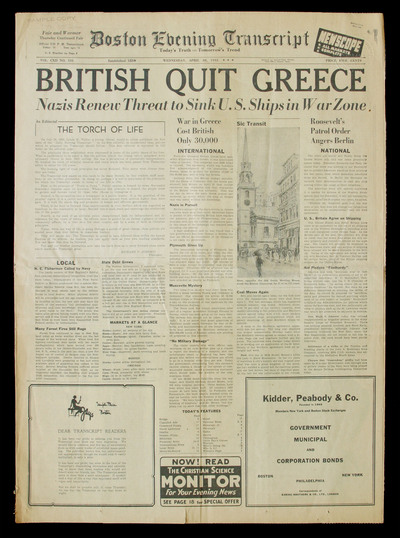The Civil War had done a great deal to shape the future of the newspaper industry in the United States. Between the end of the war and the 1890s, improved printing technology, greater urbanization (and therefore more efficient distribution), and increasing public literacy had made the industry very lucrative.1 The growth in the industry profit margin also led to a growth in competition. Editors began searching for new ways to attract readers. The first changes to be made were purely aesthetic. During the war, newspaper typesetters had pioneered large, capitalized headlines and the use of multiple fonts, a trend that post-war editors continued and even expanded in hopes of attracting the attention of potential readers. Eventually, better printing and photographic processes allowed for the reproduction of images in newspapers.
As newspapermen quickly learned, aesthetics alone were not enough to build a high-circulation newspaper. Editors soon found that an exaggerated reporting style and sensational headlines appealed greatly to America’s up-and-coming middle class. William Randolph Hearst and Joseph Pulitzer, two of the most famous newspaper publishers of the era, became the figureheads for the sensationalist reporting phenomenon known as yellow journalism.1 This trend was most evident in 1898 when the American battleship Maine was sunk in Havana Harbor. Though a great deal of disagreement existed over cause of the accident, American newspapers were quick to paint it as act of war by Spain against the U.S. The resulting outcry from Americans helped ignite the Spanish-American War.
The focus of newspaper reporting began to change and expand in the late 19th century. While political and financial news remained a staple of any successful daily publication, journalists began to write stories for middle and lower-class readers. Investigative journalists, or muckrakers, became concerned with social ills, often focusing on corporate corruption and abuses suffered by the impoverished.3 Most famous among the muckrakers was Upton Sinclair, who authored The Jungle, a novel exposing the horrors of the meatpacking industry. Muckraker journalism appealed to a wide spectrum of readers including the wealthy, who were fascinated by the common plight, and the working poor who could often relate to the subject matter.
This era in history provided newspapermen with the perfect mixture of means and market that allowed the newspaper industry to explode. It also marked the birth of mass media on a hitherto incomprehensible scale. Politics, finances, and popular culture were all fused into an entity that would both reflect and shape public opinion for the next century.
Notes
- Tebbel, John. The Compact History of the American Newspaper (New York, NY: Hawthorn Books, 1969), 94-95. Return to text ↑
- Kobre, Sidney. The Yellow Press and Gilded Age Journalism. (Tallahassee, FL: Florida State University, 1964). Return to text ↑
- Tebbel, John. The Compact History of the American Newspaper (New York, NY: Hawthorn Books, 1969), 201. Return to text ↑


